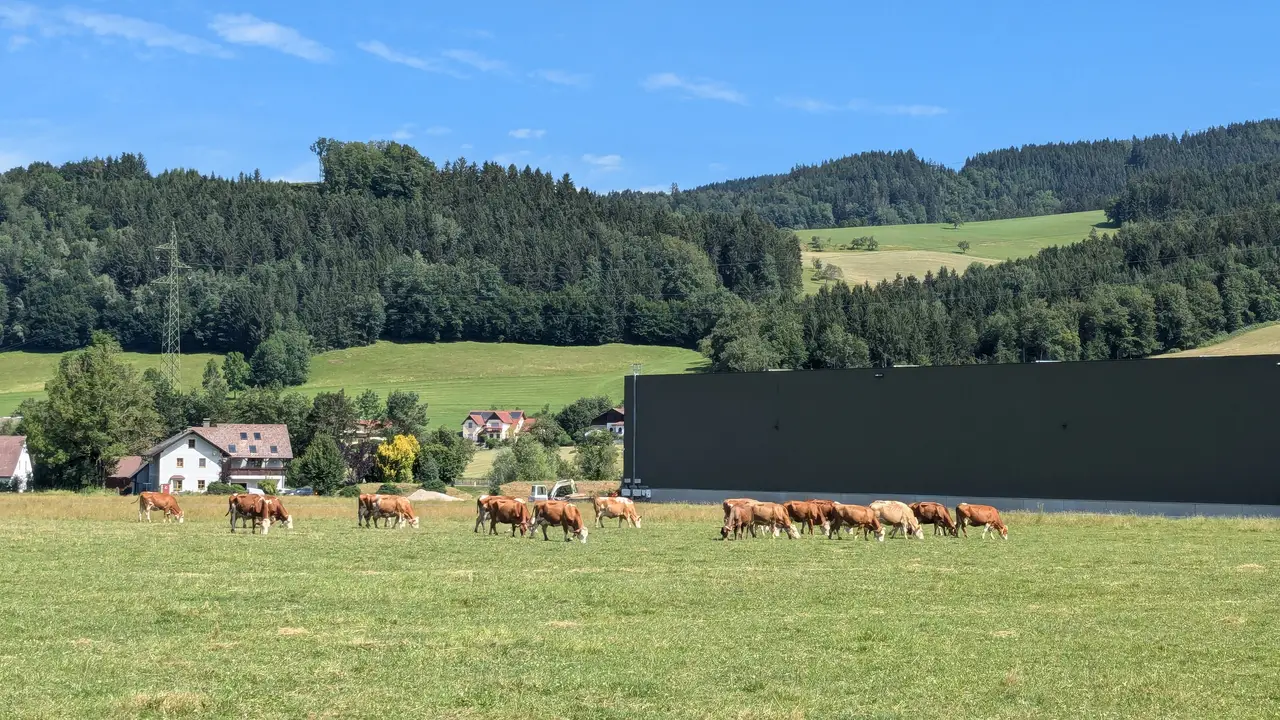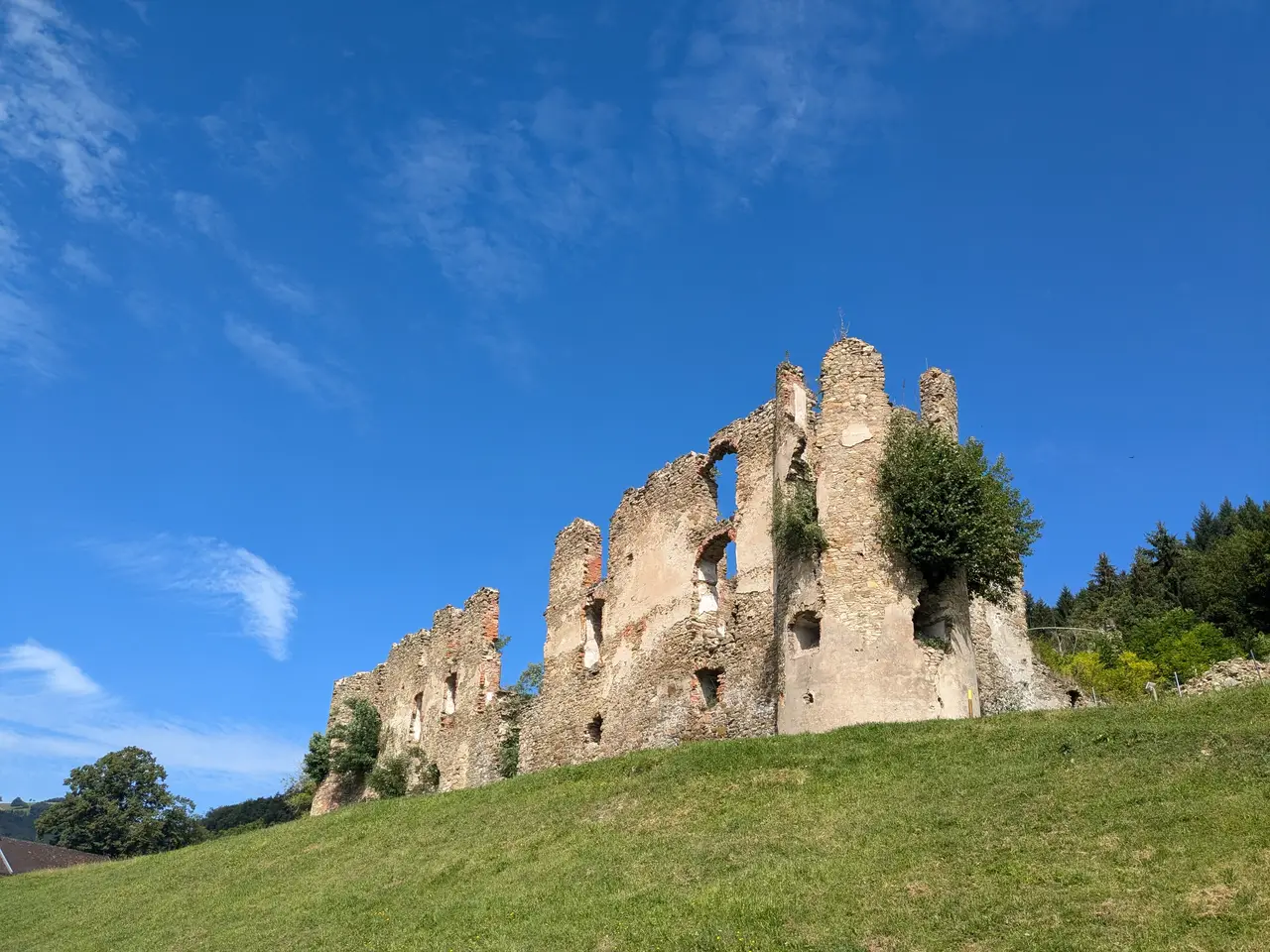As I was going through my pictures and notes in winter, I discovered this cycle tour that I hadn’t yet written a report on. That’s why this entry is a little late. Nevertheless, I don’t want it to be forgotten, which is why I’m dedicating a few lines to it here. Usually, my texts are very close to what I experienced; emotions during the trip find their way into my stories, which is why I write them in the present tense. But for this report I lack such impressions. Unfortunately, I can’t draw on memories for this article that are otherwise as fresh as if I were just experiencing them. Only my notes remain.
Wieselburg#
My cycle tour starts in Wieselburg, at the exhibition centre, where the Small Erlauf flows into the large Erlauf. Incidentally, the name of the town of Wieselburg is derived from this confluence and not from the nimble weasel, as one might assume from the name. The Middle High German Zwisel, which describes a crossroads between the large and Small Erlauf, changed over the centuries to Wiesel. High above the Zwisel on a hill there was a castle in the Middle Ages. Its foundation walls now form the town church of Wieselburg. An ideal place to monitor the two rivers, especially as the landscape flattens out downstream and only gentle slopes fall down to the Erlauf.
Starting from this Zwisel, I follow the Small Erlauf for across the area of the exhibition centre. A pedestrian bridge is crossed before Bodensdorf. In Bodensdorf one then crosses over to the railway line of the Kleine Erlauftalbahn. The cycle route not only follows the Small Erlauf, but also the railway line that connects the valley to the Westbahn via the Erlauftalbahn. However, passenger transport no longer takes place, instead a different clientele uses the advantages of the railway.
Industry and agriculture#
Several large factories are located along the route. Although the valley is characterized by agriculture - fertile fields form the landscape up to Steinakirchen, followed by lush, green meadows and pastures after Steinakirchen - ironworks also settled in the region in modern times. Brisk trade in iron ore from the Alps revitalized the region. The iron ore was smelted and forged. The rich, easily accessible forests supplied the furnaces.
In Wolfpassing, Perwarth and Randegg you pass the sawmills of the Mosser company. And in Gresten, where the railway line ends, is the headquarters of the profile manufacturer Welser. The following picture probably best describes the duality of this valley. Cows graze comfortably on a pasture next to the production halls of Welser.

Palaces and ruin#
But there is more to marvel at than just factories and the countryside. First you cycle past Wolfspassing Castle in Wolfspassing. In Steinakirchen, a little off the cycle route, you will find Ernegg Castle. Nowadays a hotel, the castle is particularly popular for weddings. The surrounding golf course also offers a relaxing game of golf. A little further on, you pass the ruined walls of Niederperwarth Castle.

The cycle path climbs gently and evenly. From around 260 metres in Wieselburg to around 480 metres at Brettl, which lies in a wide valley. Even if you have to share the road with car traffic here, this section from Gresten to Brettl is still a delight because of its peaceful, beautiful natural landscape, the green hillside meadows. There are not many cars here. For the most part, however, you spend your time on the Small Erlauf cycle path on traffic-calmed side roads. Only a few times, you switch to well-maintained gravel roads. So it is easy and also safe to cycle the whole route on a road bike.
After Brettl, the route quickly descends around 100 metres to Kienberg in the valley of the Great Erlauf. Here the cycle path rejoins the Erlauf valley cycle path after splitting off from it in Wieselburg. Both cycle paths can be easily cycled as a circular route, approx. 65 km in length.
